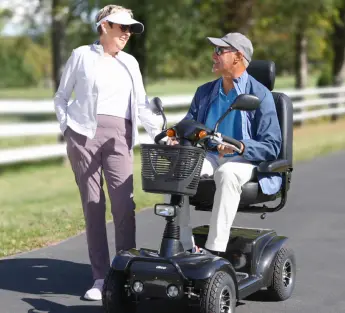Instructions - Crutches (English)
SPINLIFE
CRUTCHES
PURPOSE: The usual purpose of crutches is to aid the user in walking while relieving weight from one foot or leg. There are other uses for crutches but these require special training by physicians and/or therapists. The user must have adequate upper body and upper arm strength and must always abide by recommended procedures. If your physician or therapist instructs you differently, you must always follow their instructions explicitly.
FITTING: Crutches are very useful in assisting the user in walking, but they also can cause nerve or muscle damage if not used or fitted properly. Crutches must be adjusted to approximately 1 - 1_ inches below the armpit when the user is standing up straight. Fitting must be performed with the rubber tips on. The height of the handgrip should also be adjusted to allow a 20 - 30 degree bend in the elbow when the user is standing up straight.
USE: The method medical equipment suppliers teach is called the Three-Point-Gait. At all times your total weight should be placed on the handgrips, not your armpits. While standing up straight, shift your weight to the good leg and bend your injured leg. Move both crutches forward approximately 12 inches. Now shift your weight to the handgrips and swing through the crutches until you are even with the crutches. Continue performing this routine until you are comfortable with the procedure. Once you are comfortable, you can swing through the crutches to a point in front of the crutches. This point is dependent on your confidence and crutch-walking ability.
Never negotiate steps unless your physician or therapist has recommended you do so. This is a potentially dangerous practice and needs specific training and monitoring. Always practice safe crutch walking. Never attempt to walk at an accelerated pace, this can cause you to slip and fall.
SAFETY: Always use the crutches for their intended purpose. Never allow someone to use your crutches unless they have been fitted properly for that user.
MAINTENANCE: Your crutches, if maintained properly, can last for many years. The rubber tips are there to provide traction on walking surfaces. These tips must always be in good working condition. The handgrips are there to provide better gripping of the crutch and to provide cushioning. These should also be changed immediately when they are cracked or become uncomfortable to grasp. The under-arm pads also are there to provide comfort and to help prevent any nerve damage. Replace them when they become split or uncomfortable.





 Contact Us
Contact Us
 M-F 9am - 6pm ET
M-F 9am - 6pm ET
 Request parts
Request parts Request Service
Request Service
